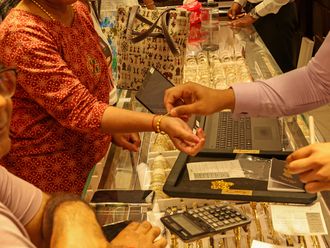Do retailers need to work harder on their loyalty programmes? With the year coming to an end and people planning their holidays — retailers are on a promotion overdrive. It’s raining deals.
As someone who is fascinated by retail, I have always been interested in how retailers design and promote their loyalty programmes. It is a great study in consumer behaviour, and economics.
There are people who ask: “Does shopper loyalty matter?” and others who say: “Shopping has changed, loyalty is dead”.
It’s a claim we hear a lot. But is it true?
Loyalty is not dead but it’s changing — and therefore retailers need to change too — really fast.
It’s clear that shoppers are increasingly fickle. Swamped with choices, offers and new ways to spend their money, they’re more willing than ever to drop their brands of choice in favour of something different.
It’s never been a better time to be a consumer. But with the balance of power tipping, it’s a challenge for retailers. With choice in abundance, customers are demanding, and loyalty is scarce.
Disruptive change is challenging retail to evolve to the point where fewer retailers think their customers remain loyal. However, we all still have brands we prefer, for whatever reason.
Most retailers believe a loyalty strategy is critical to their business success and are willing to find new ways to keep customers coming back or more. So how can retailers switch from “buying” to “building” loyalty?
Retailers are having to rethink how they keep their customers coming back for more. Transaction-based promotions and discounts are no longer enough ... building a more two-way relationship is becoming critical.
Many retailers respond with shortcuts — prices, promotions etc. However this has actually questioned — if not broken — the emotional link with the more loyal consumers. When shopping just becomes about the transaction, loyalty suffers. It’s also the reason why price cut promotions don’t generate the same shopper excitement as they did in the past.
In conversations with some retail players, it’s clear that enthusiasm for loyalty programmes and those who stick to loyalty programmes have gone down. This attrition may be a result of several factors. For example, shoppers can get the discounts they expect from loyalty programmes often without being part of a programme (they just have to search the internet).
The increase in retail loyalty programmes (and other industry programmes for that matter) over the last five years has meant that not only have the programmes become less special and more commoditised, but they have also become a burden to manage.
Participation in a rewards or loyalty programme no longer offers retailers the benefits they once did. Shoppers said loyalty programmes don’t draw them to stores or entice them to spend more. Not many shoppers nowadays would go “out of their way” to shop a store to use their loyalty rewards. It is only natural that over time shoppers’ interest in them would wane, especially if retailers cannot find a way to keep these programmes fresh, fun and functional.
The overall perceived value has diminished in shoppers’ eyes: the majority feel the benefits were not as good as they once were, and they certainly don’t feel special (or valued) by being part of a retailer’s programme.
So, do loyalty cards still work? Absolutely, but it’s no longer going to be enough.
In today’s competitive retail environment, price and convenience are not sustainable and differentiating loyalty propositions on their own. It is important, while still acknowledging them, to look at other factors that are relevant to shoppers in order to build longer-term loyalty.
It’s about going back to the basics and asking that very simple question: what do customers want?
A meaningful store experience, personalised offers and seamless omni-channel access are the cost of entry with today’s deal obsessed shoppers.
An excellent new year resolution for retailers perhaps?
The writer is EY’s MENA Consumer Products and Retail Leader.










